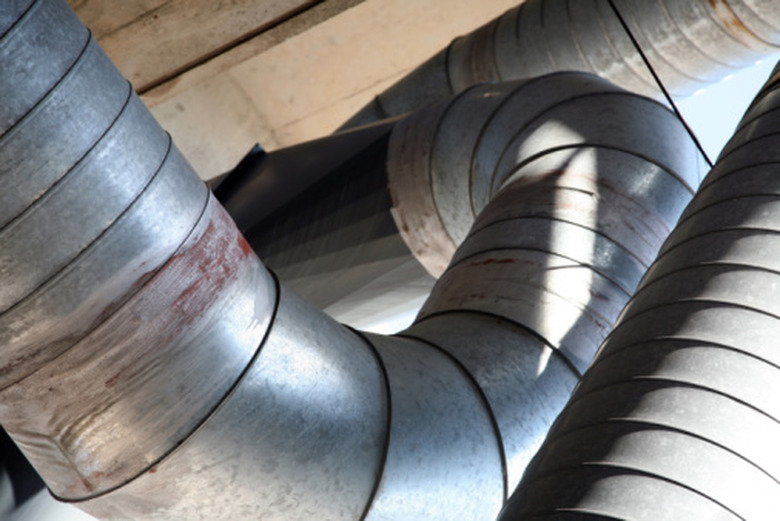How To Calculate Duct Airflow
All heating, air conditioning and ventilation systems use ducting to deliver air from the heating or AC units to the desired locations inside homes and buildings. In addition, ducts also carry air out as required for some venting and air circulation operations. Duct airflow is proportional to the required air speed and the cross-sectional area of the ducting system. For this reason, as the duct size increases, the airflow increases.
Step 1
Find the air velocity, or "v," required by the facility your duct system supports in units of meters per seconds. Refer to the facility drawings or specifications.
Step 2
Find the cross-sectional area, or "A," of the ducting system in units of square meters. Refer to design specifications for your ducting system.
Step 3
Calculate the duct air flow, or "q," using the formula: q = v x A. For example, if v is 15 m/s and the A is 8 square meters, q is 120 cubic meters per second or 120 m^3/s.
References
Cite This Article
MLA
Chestnut, Dwight. "How To Calculate Duct Airflow" sciencing.com, https://www.sciencing.com/how-8223884-calculate-duct-airflow/. 7 August 2017.
APA
Chestnut, Dwight. (2017, August 7). How To Calculate Duct Airflow. sciencing.com. Retrieved from https://www.sciencing.com/how-8223884-calculate-duct-airflow/
Chicago
Chestnut, Dwight. How To Calculate Duct Airflow last modified March 24, 2022. https://www.sciencing.com/how-8223884-calculate-duct-airflow/
